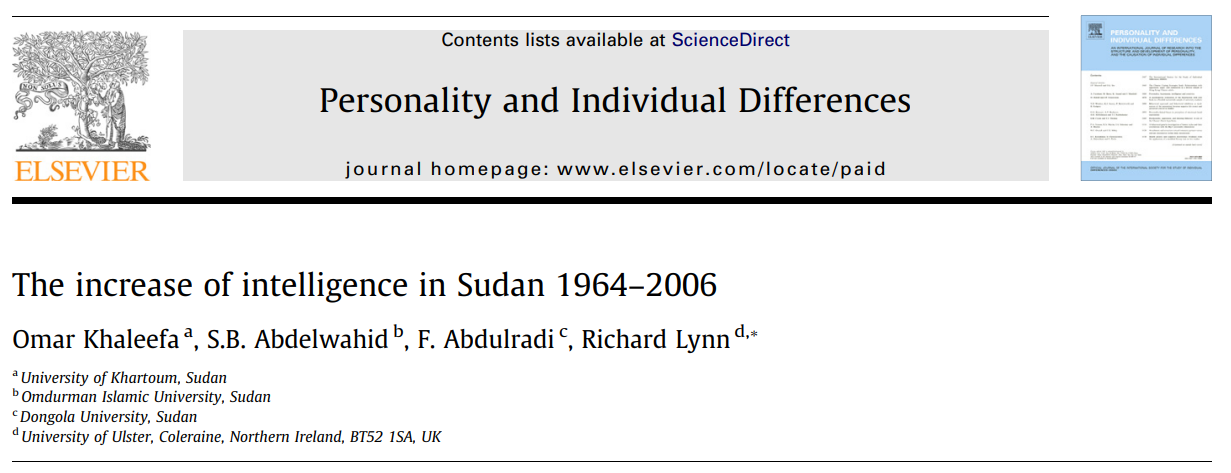
The increase of intelligence in Sudan 1964–2006
The study examines an increase of IQ in Sudan between the years 1964 and 2006 measured by the Draw-a-Man Test.
Introduction
Secular increases in IQs were reported in the United States in the 1940s by Wheeler (1942), Smith (1942) and Tuddenham (1948). Shortly afterwards similar IQ increases were reported in Scotland (Scottish Council for Research in Education, 1949) and in England (Cattell, 1950). Further work documenting this phenomenon has been published for a number of other countries by Lynn and Hampson (1986) and Flynn (1984), Flynn (1987), after whom the increases have been named the ‘‘Flynn effect”. Virtually all these IQ increases have been reported in economically developed nations. There have, however, been three reports of IQ increases in the economically undeveloped nations of Kenya, Brazil and Dominica. In Kenya an IQ increase of 14 IQ points from 1984 to 1998 (10.0 IQ points a decade), based on samples of 7 year olds measured by the Colored Progressive Matrices, was reported by Daley, Whaley, Sigman, Espinosa, and Neuman (2003). In Dominica, an IQ increase of 18 IQ points (5.1 IQ points a decade), in cohorts born in 1948 and 1983, measured by the Standard Progressive Matrices, has been reported by Meisenberg, Lawless, Lambert, and Newton (2005). In Brazil an IQ increase of 17 IQ points from 1930 to 2002 (2.4 IQ points a decade), based on samples of 7–11 year olds measured by the Draw-a-Man Test, was reported by Colom, Flores-Mendoza, and Abad (2007). In this paper we make a further contribution to the issue of IQ increases in economically undeveloped nations by presenting data
for an IQ increase in Sudan.
